Speaker
Description
Introduction
The Quantum Angle Generator (QAG) is a novel quantum machine learning model designed to produce precise images on current Noise Intermediate Scale Quantum (NISQ) devices. The QAG model leverages the probabilistic nature of quantum computers in the generation process and functions as an implicit model trained with the Maximum Mean Discrepancy (MMD) loss. To the best of our knowledge, this is the first quantum model to achieve such accurate results.
Methods
This study consists of an in-depth exploration of the choice of different hyperparameters to best optimize the training and the learning of correlations between features. Additionally, it includes a comprehensive investigation into the model's robustness to quantum noise at multiple levels (see Figure 1). This involves training the model on a quantum device to evaluate its ability to learn and adapt to hardware noise behavior. The model's stability and performance are assessed under simulated quantum hardware noise, with noise levels reaching up to approximately 1.5% during inference and nearly 3% during training. Furthermore, the model's performance is evaluated on actual quantum hardware, comparing the outcomes of noise-less training versus hardware-trained models. The study also examines the model's capacity to maintain precision despite significant hardware calibration changes, with noise levels increasing up to 8% for one qubit.
Results
The findings indicate that the QAG model can effectively adapt to hardware noise behavior and produce accurate results, making it suitable for current NISQ devices. Notably, a clear decrease in accuracy is observed when the noise-less trained model is run on real quantum hardware. Conversely, when the model is trained directly on the hardware, it learns the underlying noise behavior, achieving precision comparable to that of the noisy simulator.
Discussion
This work demonstrates the QAG model's ability to learn and adapt to hardware noise behavior, delivering accurate results under realistic noise levels expected in real-world quantum hardware. The QAG model is used to generate simulated calorimeter shower images, which are crucial in high-energy physics simulations for determining particle energies and identifying unknown particles at CERN's Large Hadron Collider. The performance of the QAG model is compared against Monte Carlo-generated events in Geant4 (see Figure 2).
Figures
Figure 1: Different noise levels in training on simulators and two IBM processors.

Figure 2: Total energy sum histogram of QAG and Monte-Carlo generated events.

References
[1.] Florian Rehm. “Deep Learning and Quantum Generative Models for High Energy Physics Calorimeter Simulations”. Presented 25 Aug 2023. RWTH Aachen University, 2023. URL.
[2.] Florian Rehm, Sofia Vallecorsa, Kerstin Borras, Dirk Krücker, Michele Grossi, and Valle Varo. “Precise image generation on current noisy quantum computing devices”. Quantum Science and Technology 9.1 (2023), p. 015009.
Short summary
The Quantum Angle Generator (QAG) is a quantum machine learning model that generates precise calorimeter shower images on NISQ devices. It adapts to hardware noise, achieving high accuracy for high-energy physics simulations, even under significant noise levels.
Email Address of submitter
saverio.monaco@desy.de
